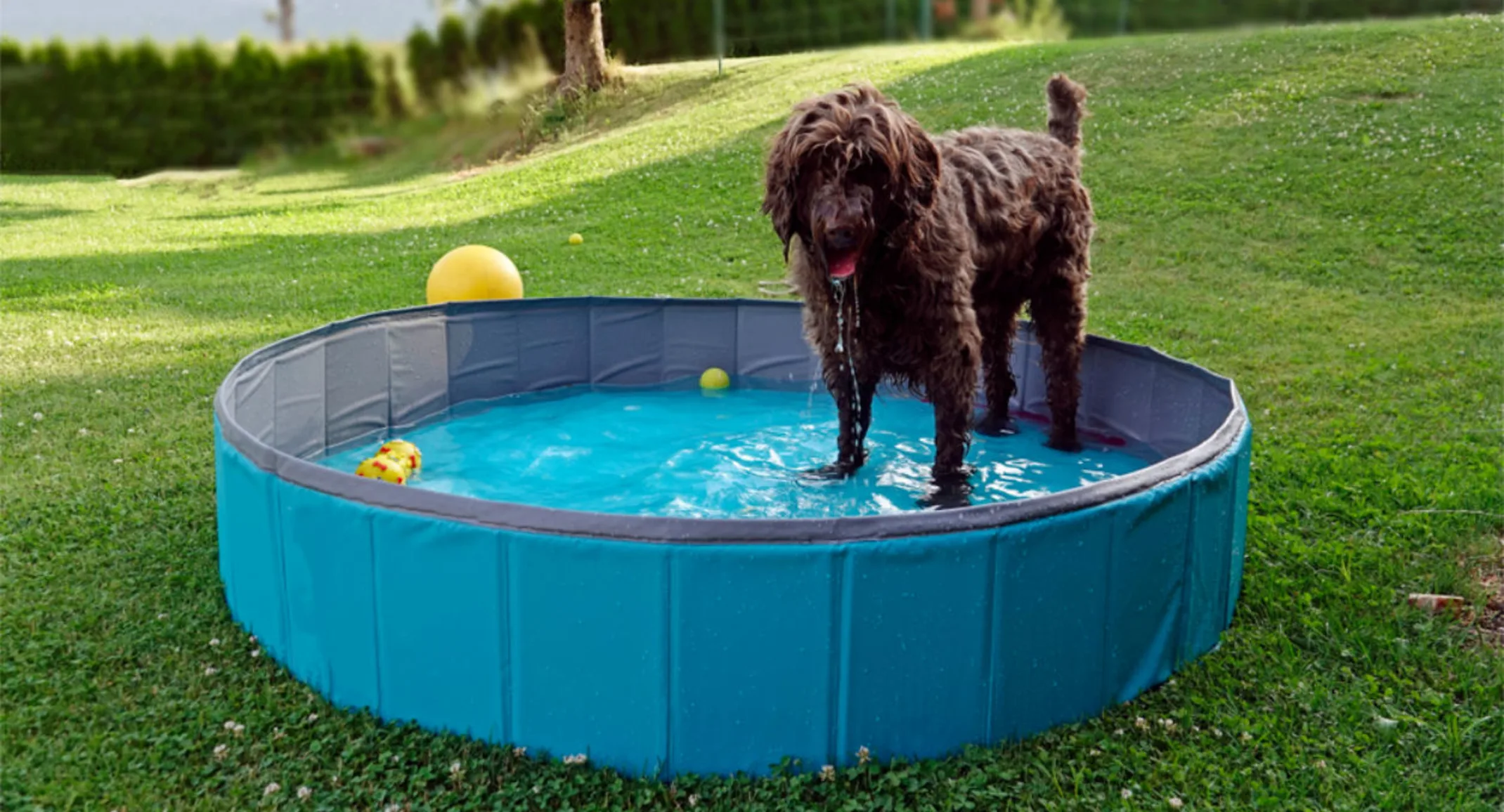5 Pet-friendly Tips to Beat the Heat
Health Tips

July 24, 2022
Summer in Austin is H-O-T, not only for people but for pets too.
Our furry friends can’t regulate their body temperature as well as we can, and can overheat easily in our scorching, Texas summer weather.
Why are pets so susceptible to overheating? They have fewer sweat glands and can’t cool off by sweating like humans can. Instead, pets cool themselves by panting. When your pet pants, they exhale warm breath and take in cooler air, which passes through their lungs and cools their body as they inhale. Evaporation of moisture from your pet’s mouth and tongue as they breathe in and out also cools them down.
However, a pet’s natural cooling mechanisms are no match for extreme temperatures and humidity levels, and when their body temperature rises above the normal range of 100 to 102.2 degrees, they can suffer heatstroke. To avoid a heat-related emergency this summer, keep your pet cool everywhere you go with these simple tips from the Southwest Vet team.
#1: Know the signs of heatstroke in pets
When your pet’s body can no longer cool itself adequately, heatstroke can happen and lead to organ failure and death if appropriate measures aren’t taken quickly.
All pets are at risk of heatstroke in extreme temperatures, and certain breeds, like short-muzzled (i.e., brachycephalic) pugs and boxers, are even more susceptible. Common signs of heatstroke include:
Heavy panting
Drooling
Red gums
Rapid breathing and fast heart rate
Dull or distant look
Lethargy and weakness
Seizures
Collapse
If you suspect your dog has suffered from heatstroke, bring them indoors, wet them down with cool—never cold—water, and seek medical treatment immediately.
#2: Keep your pet cool at home
When the temperature soars, it’s best to reduce your pet’s outdoor time. Crank up the air conditioning and provide your pet with plenty of fresh, cool water throughout the day.
To keep your pet entertained indoors, treat them to a frozen pet-friendly snack, such as:
Frozen fruits
Frozen veggies
Frozen xylitol-free peanut butter in a Kong
#3: Keep your pet cool in the yard
When your pet does venture outside—to relieve themselves, for instance—it’s important to provide them with shade. In addition, ensure they have access to water and an elevated bed to give them a place to rest that is off the hot ground.
#4: Keep your pet cool on walks
Before heading out for a walk with your pet, check the temperature and humidity levels. On excessively humid days, pets can struggle to cool themselves, and their body temperature can reach a dangerous level. The more humid it is, the lower the heat has to be to negatively affect your pet.
Avoid midday heat — When the temperature is high, exercise your pet early in the morning or late at night when the sun’s rays are less intense.
Keep walks short — Keep your walks short on hot days and avoid strenuous outdoor aerobic activities.
Test the pavement — Ensure the pavement is safe for your pet by testing it with your hand.
If you cannot keep your hand there comfortably for 10 seconds, the pavement is too hot. Try to walk your pet in shaded grassy areas, and, if possible, carry your pet when crossing hot paths and roads.
Bring water — Take along plenty of water. Pets lose moisture much faster than humans, and it’s important they stay hydrated, especially when exercising in the heat.
Use a cooling vest — Soak a cooling vest or bandana in cool water before your walk and place it on your pet to help them beat the heat.
Use pet-friendly sunscreen — Don’t forget the sunscreen. While your pet’s fur covers most of their body, any exposed skin is susceptible to sunburn. Certain areas of the body are more likely to burn, including:
Nose
Tips of the ears
Muzzle
Eyelids
Belly
Ensure you use a sunscreen formulated specifically for pets, however.
#5: Keep your pet cool (and safe) at the pool
A dip in the pool is a great way for you and your pet to cool off, but it can lead to a dangerous situation for an unsupervised pet.
Avoid problems with these tips:
Keep your pool secure — Install a gate and fence around the premises.
Supervise your pet — Always supervise your pet when they’re in the pool. They may be a strong swimmer, but problems can arise. Check your pet frequently to ensure they are not tiring.
Get a pet life vest — Purchase a life vest for your pet.
While many pets are natural swimmers, a life vest can increase their water safety. All pets can tire after swimming for long periods of time, while less confident swimmers will benefit from the floating ability that a life vest provides.
Texas summers bring loads of opportunities for fun, and as long as you know how to keep your pet cool, you can worry less and get back to focusing on enjoying your time with them. Of course, our team is always here for you and your pet. Contact our Southwest Vet team if your pet experiences a heat-related emergency.
